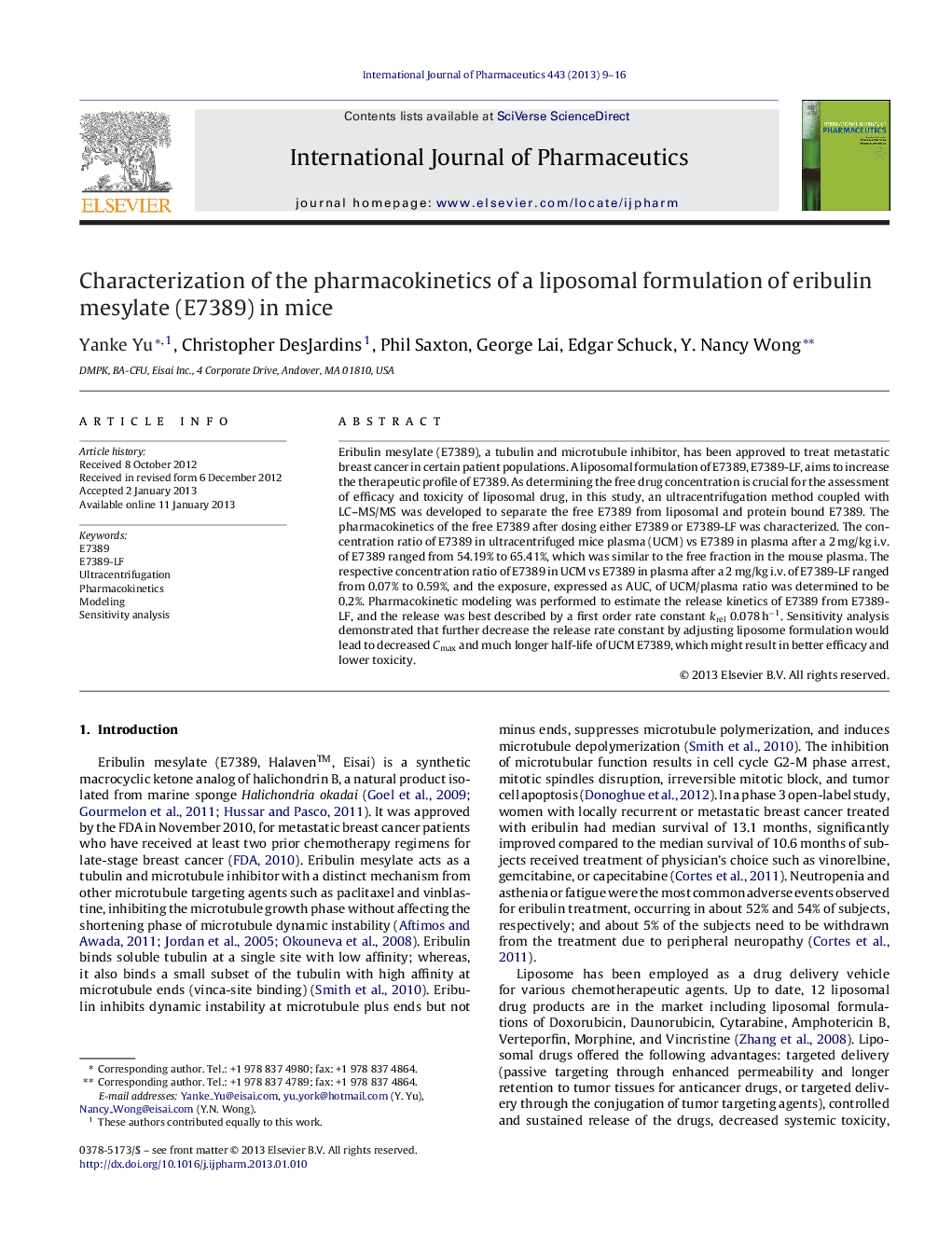| Article ID | Journal | Published Year | Pages | File Type |
|---|---|---|---|---|
| 2502596 | International Journal of Pharmaceutics | 2013 | 8 Pages |
Eribulin mesylate (E7389), a tubulin and microtubule inhibitor, has been approved to treat metastatic breast cancer in certain patient populations. A liposomal formulation of E7389, E7389-LF, aims to increase the therapeutic profile of E7389. As determining the free drug concentration is crucial for the assessment of efficacy and toxicity of liposomal drug, in this study, an ultracentrifugation method coupled with LC–MS/MS was developed to separate the free E7389 from liposomal and protein bound E7389. The pharmacokinetics of the free E7389 after dosing either E7389 or E7389-LF was characterized. The concentration ratio of E7389 in ultracentrifuged mice plasma (UCM) vs E7389 in plasma after a 2 mg/kg i.v. of E7389 ranged from 54.19% to 65.41%, which was similar to the free fraction in the mouse plasma. The respective concentration ratio of E7389 in UCM vs E7389 in plasma after a 2 mg/kg i.v. of E7389-LF ranged from 0.07% to 0.59%, and the exposure, expressed as AUC, of UCM/plasma ratio was determined to be 0.2%. Pharmacokinetic modeling was performed to estimate the release kinetics of E7389 from E7389-LF, and the release was best described by a first order rate constant krel 0.078 h−1. Sensitivity analysis demonstrated that further decrease the release rate constant by adjusting liposome formulation would lead to decreased Cmax and much longer half-life of UCM E7389, which might result in better efficacy and lower toxicity.
Graphical abstractFigure optionsDownload full-size imageDownload high-quality image (70 K)Download as PowerPoint slide
